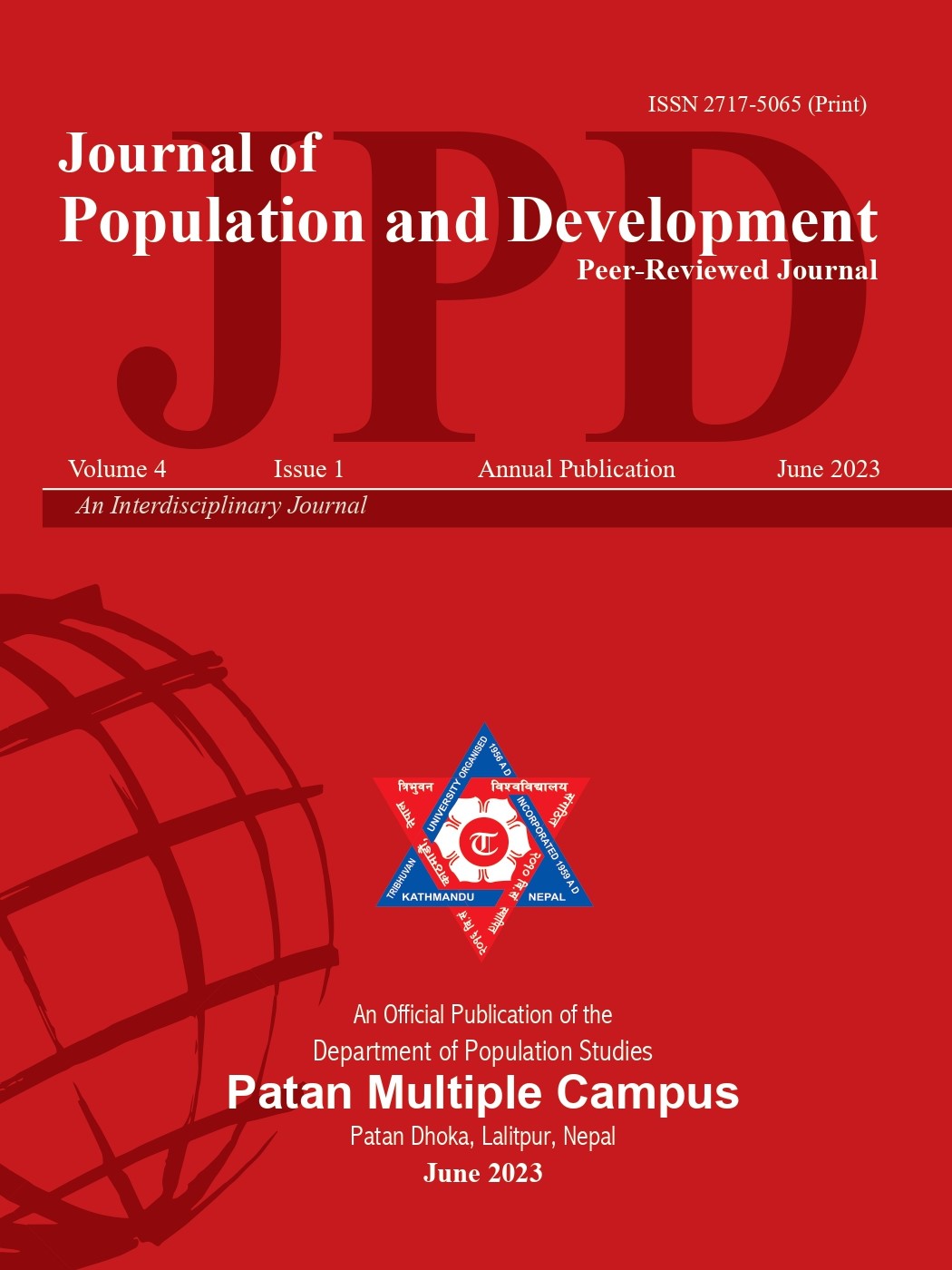Spatial Distribution of Population in Nepal: On the Basis of 2078 Census
DOI:
https://doi.org/10.3126/jpd.v4i1.64240Keywords:
Population size, growth rate, spatial distribution, province levels and densityAbstract
The indicators of population change, which would affect distribution, include birth rate, death rate, immigration, and emigration. Significant adjustments to any of these indicators can alter how a population is distributed. The general patterns to the distribution of a population are known as spatial distribution patterns. Spatial distribution patterns can be uniform, random, or clumped. Additionally, population distribution is affected by population density, which is the number of individuals within a given area. This paper based on the major aspects of population changes i.e. size, growth and distribution of population in Nepal and based on censuses data over time. Population size and growth rate has been increasing over the time. It has rapidly increased since 1961—2011. In 2021 census, total population are 29.1 million, which is an increase of 10.1 million when compared to 26.4 million population recorded in 2011 census with an average annual growth rate of 0.93 percent (2021) lower than 1.35 percent growth rate reported in 2011 census. Tarai accounts 53.6 percent of the total population with percentage of average annual growth rate 1.56. By province level, Madhesh province holds more than twenty percent of the population of the country (i.e. 20.99 %) and an average annual growth rate 1.20 percent. It may be due to the inclusion Tarai in this region. The highest population growth rate is found in Bhaktapur district (3.32 %) and while the least is in Ramechhap (- 1.65 %). Overall the current dramatic decline in the population growth rate may be attributed to the absence heavy cause behind migration in various reasons.
Downloads
Downloads
Published
How to Cite
Issue
Section
License
© Department of Population Studies, Patan Multiple Campus

